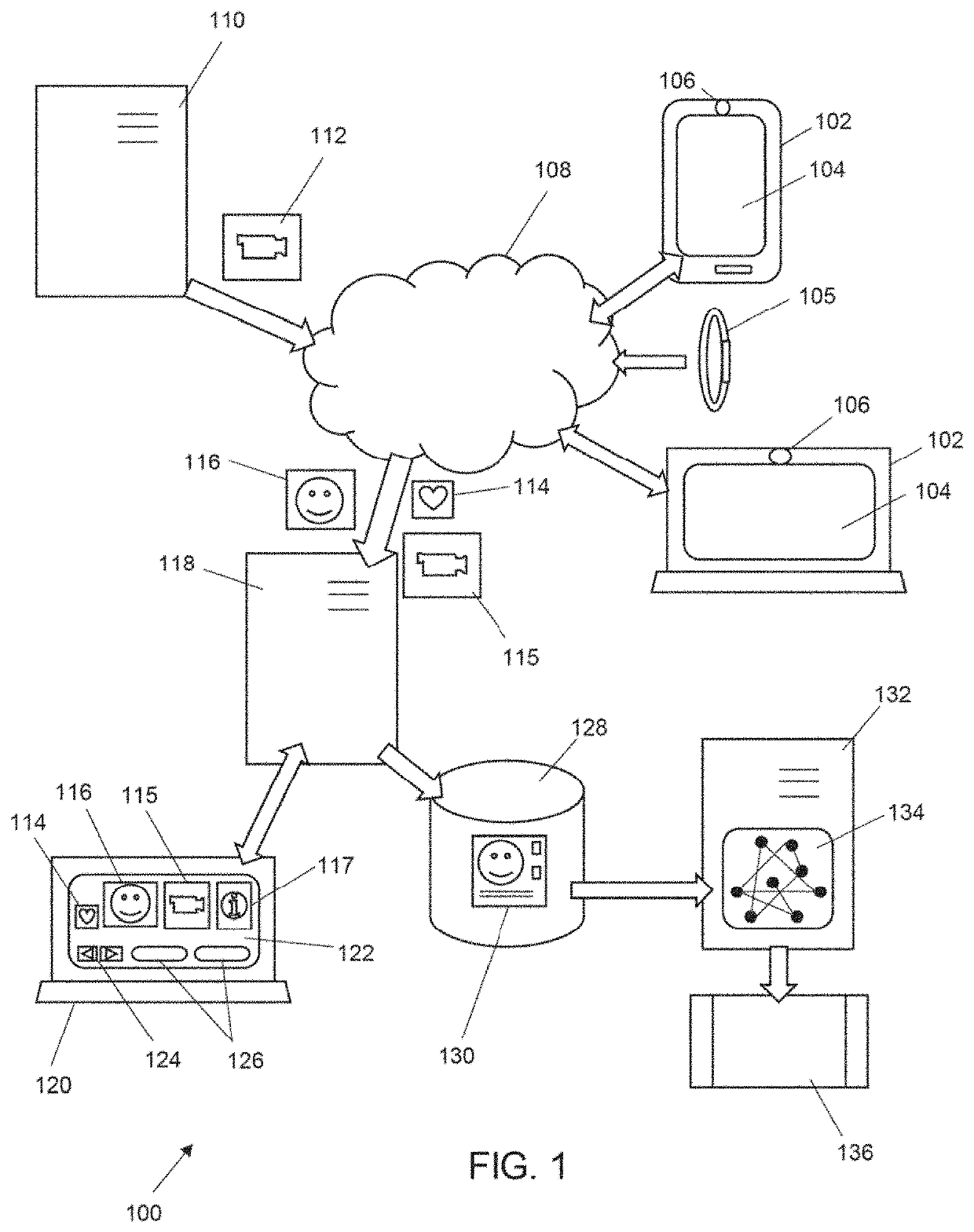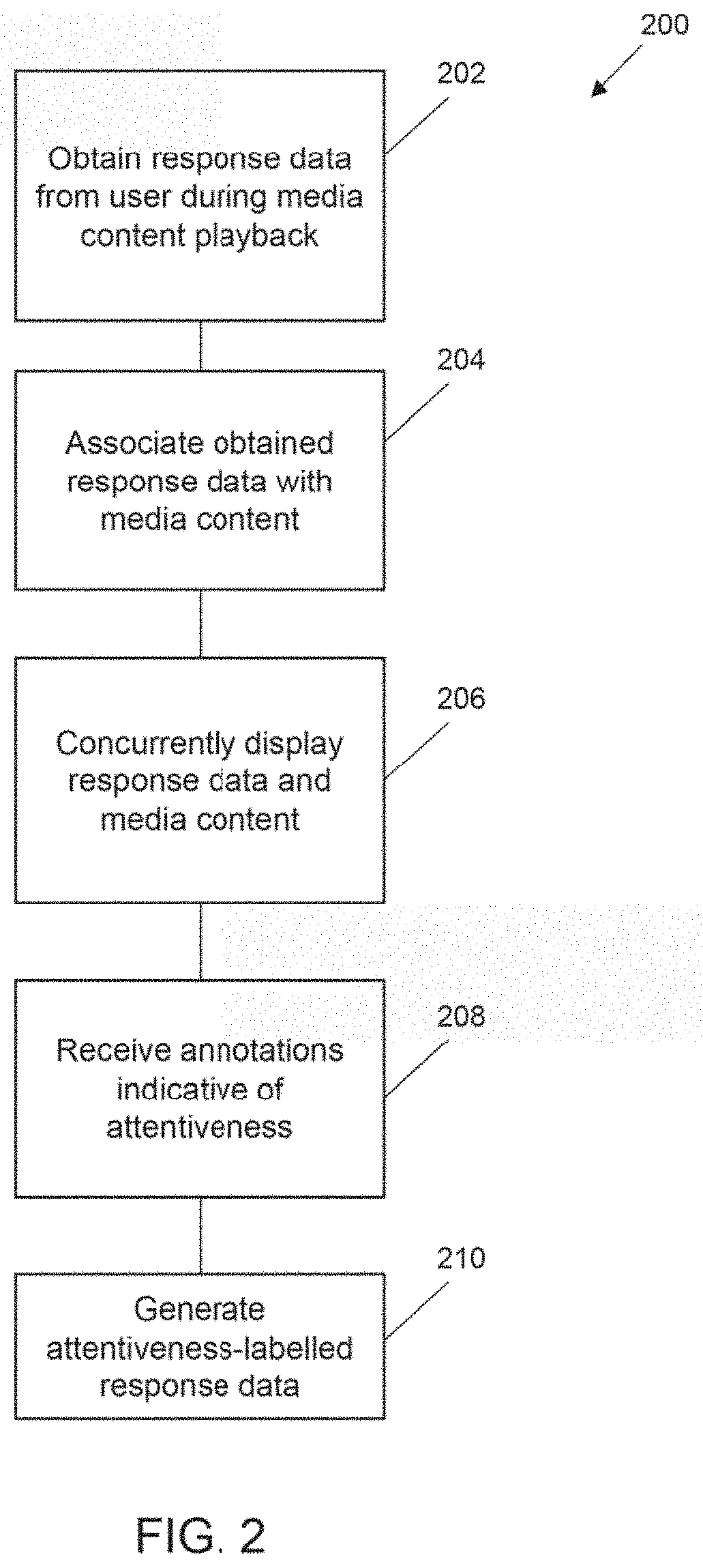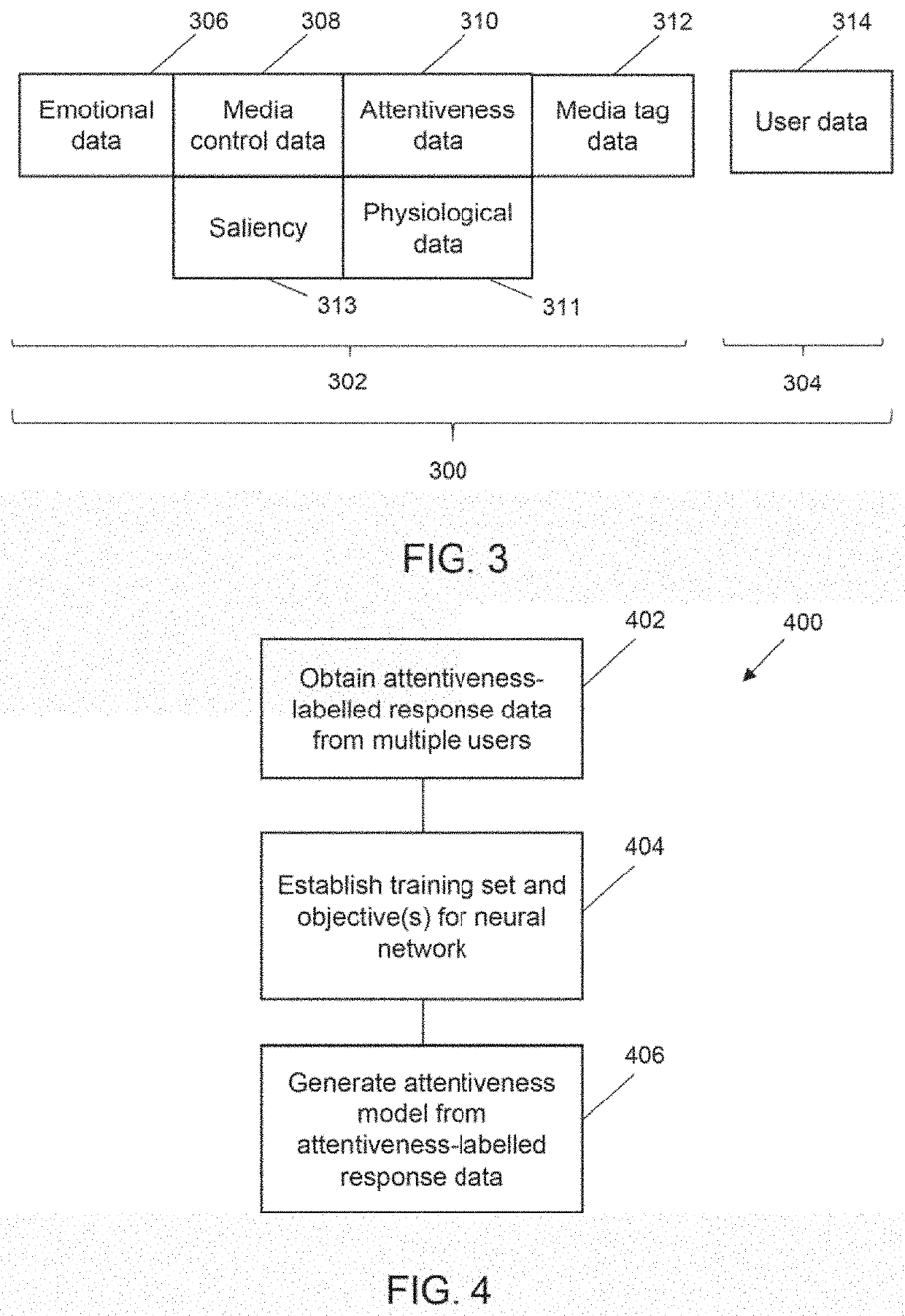[0013]The system for collecting attentiveness information may comprise an annotation tool that facilitates manual (i.e. human-driven) labelling of the user's response with attentiveness data. The resulting attentiveness model may thus be based on correlations indicative of attentiveness within the attentiveness-labelled behavioural data and / or physiological data that are based on real human cognition rather than a predetermined feature or combination of features. It is possible to predict that certain behavioural characteristics (e.g. blink rate, head pose changes, gaze direction changes, facial expressions) will strongly correlate with attentiveness. In principle such characteristics may be used as a proxy for attentiveness. However, this approach can miss the context in which these characteristics occur, which can in turn increase the risk of false indications. By relying instead on source data that reports directly on attentiveness, the attentiveness model may avoid such problems whilst also being sensitive to more subtle correlations.
[0020]The data stream may comprise a plurality of different types of response data. By providing different types of data, the data stream may facilitate annotation of attentiveness by providing the annotation with a rich picture of many aspects of the user's reaction. Moreover, following labelling for attentiveness, the different type of data may continue to provide additional response parameters and therefore provide a richer training set for a machine learning process to established an attentiveness model.
[0029]Where the behavioural data comprises emotional state data, the method may further comprise deriving a significance score or weighting for the emotional state data based on the received label data indicative of user attentiveness. In other words, the information about a user's attentiveness is used to affect the influence of the emotional state data for the user in future steps. Thus, if it were useful to try to determine how a piece of media content made people feel, the invention would be able to reduce the impact of emotion reactions from people who were not engaged with the media content. This may be beneficial because otherwise the emotional reactions from non-engaged users could skew the findings.
[0032]A display that combines multiple behavioural parameters may further improve the quality and speed of human annotations. It assists annotators in identifying areas in the timeline where changes in the attentiveness are likely to have happened and they can assess whether those changes are due to the media content or induced by other factors.
[0034]In another example, rather than obtaining human annotations, the attentive model may instead use one or a subset of parameters in the data stream as a ground truth against which the attentiveness model can be trained. For example, where physiological data is recorded, this may be used as a target for an artificial neural network. In this example, the attentiveness model can effectively predict a physiological response (which may be indicate of attentiveness) based on collected information for users where physiological data is not available. In another example, attentiveness saliency may be used as a target for the attentiveness model.
[0038]As mentioned above, the attentiveness-labelled response data in the training set may comprise media tag data indicative of subject matter in the media content being consumed. The method may further comprise: obtaining new media tag data for another piece of media content, and inputting the new media tag data to the attentiveness model to obtain an attractiveness score for one or more portions of the piece of media content. In other words, the attentiveness model may have due regard to the subject matter, structure or layout of the media content. It may thus be able to predict how people will be engaged with the media content based on its subject matter and presentation. A meaningful attentiveness score may be very useful in preventing unnecessary human-based testing of the media content before launch. This may be useful in an example where attentiveness is expected at particular portions of the media, e.g. brand reveal in an advertisement, on in action-packed sequences in other media. Taking this information into account may be a way of obtaining training data more efficiently, or it may enable the attentiveness model to be targeted at particular types of event that occur in a given piece of media (e.g. brand reveal in advertising). As discussed above, this kind of attentiveness saliency information may be part of the data stream that is used to facilitate annotation, i.e. mixed with other measures of attentiveness, such as the human-labelled data and / or physiological data. A mixed data stream such as this may represent better attentiveness data for training an attentiveness model. For example, attentiveness saliency deduced from the content itself can be used to weight the human labels.
 Login to View More
Login to View More  Login to View More
Login to View More 


